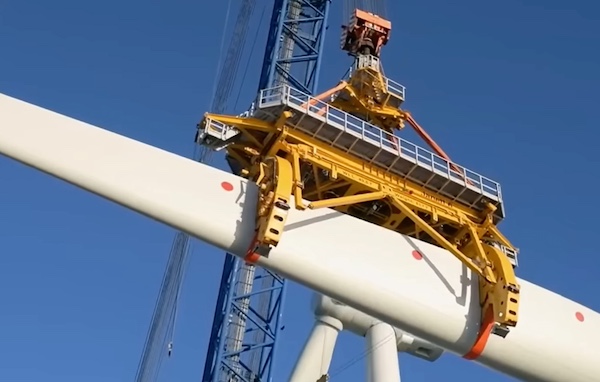
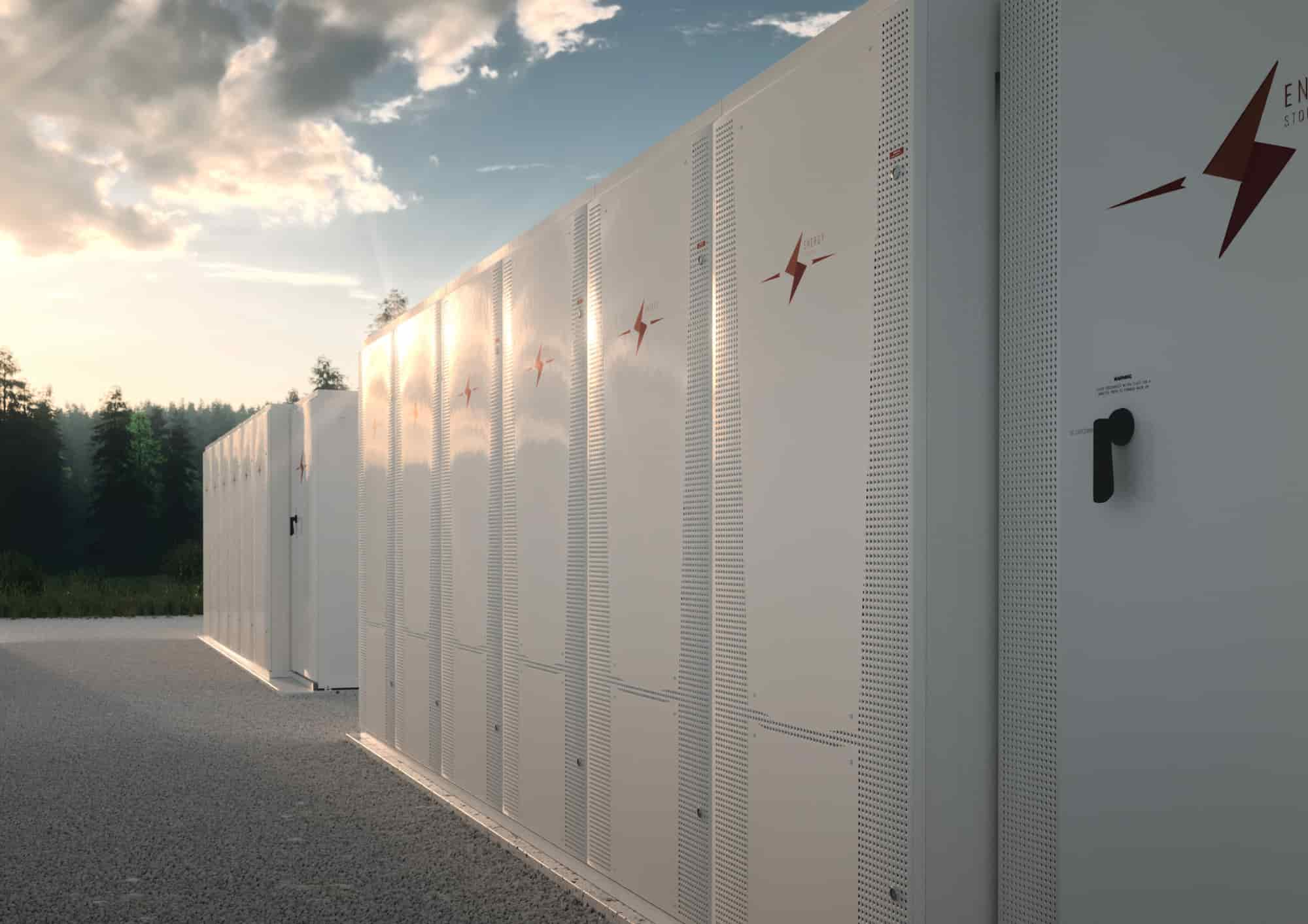
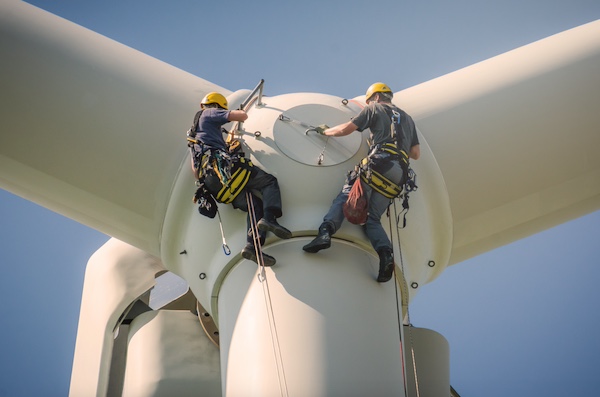

A survey of nearly 1000 residents living near large-scale solar plants finds considerably more positive attitudes than negative, while identifying key concerns.
Driven by favorable economics, policy factors, and decarbonization goals, large-scale solar (LSS, defined here as ground-mounted photovoltaic projects ≥1 MWDC) has expanded rapidly in recent years, with more than 90 gigawatts (GW) now installed across the United States. Growth in LSS deployment is anticipated to accelerate in response to growing electricity demand and utility, state, and federal decarbonization goals. This continued expansion hinges, in part, on the continued support of local residents and decision-makers in communities hosting LSS projects. But that support is not guaranteed; LSS developers now cite opposition as one of the leading causes of project delays and cancellations. Understanding the perceptions and attitudes of existing LSS neighbors is critical to inform and enable future LSS deployment, and to improve outcomes for those host communities.
As of 2022, there were more than 10 million U.S. homes within 3 miles of LSS plants. Yet, until recently, no comprehensive study had examined the experiences and perceptions of these LSS neighbors. In 2023, a Berkeley Lab led team conducted the first-of-its-kind nationally representative survey of LSS neighbors as part of the Community-Centered Solar Development research project. The survey effort ultimately collected 984 responses from residents within 3 miles of existing LSS projects.
A full set of survey analysis results is available in a slide-deck report here, along with a 4-page summary brief.
A summary of key takeaways and highlights are listed below:
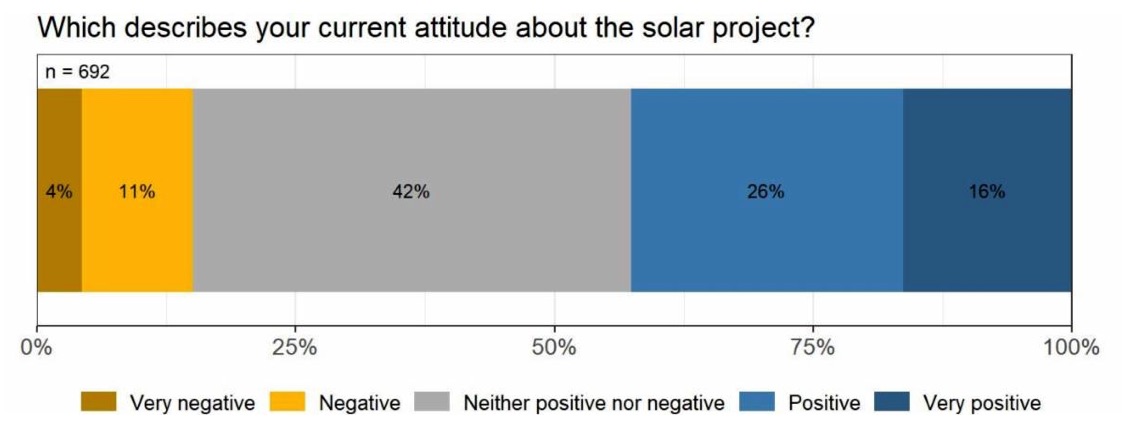
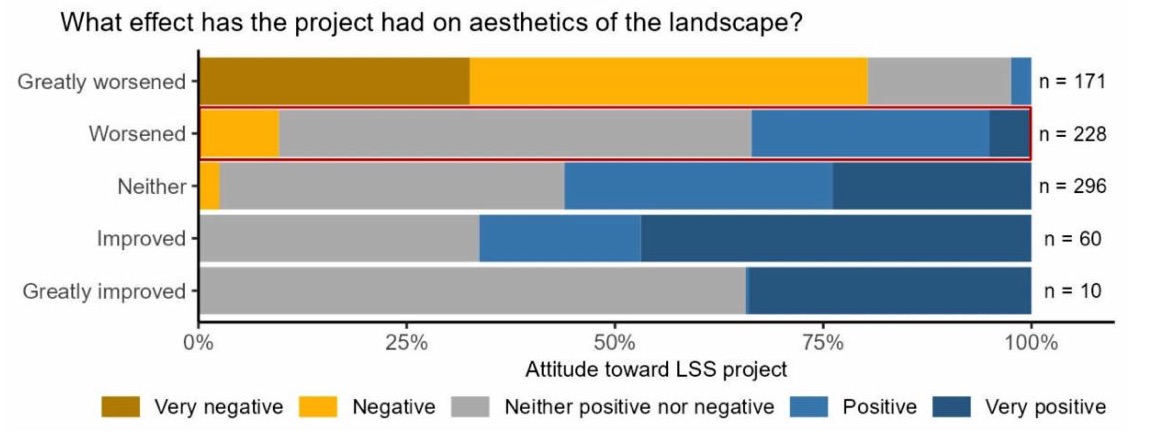
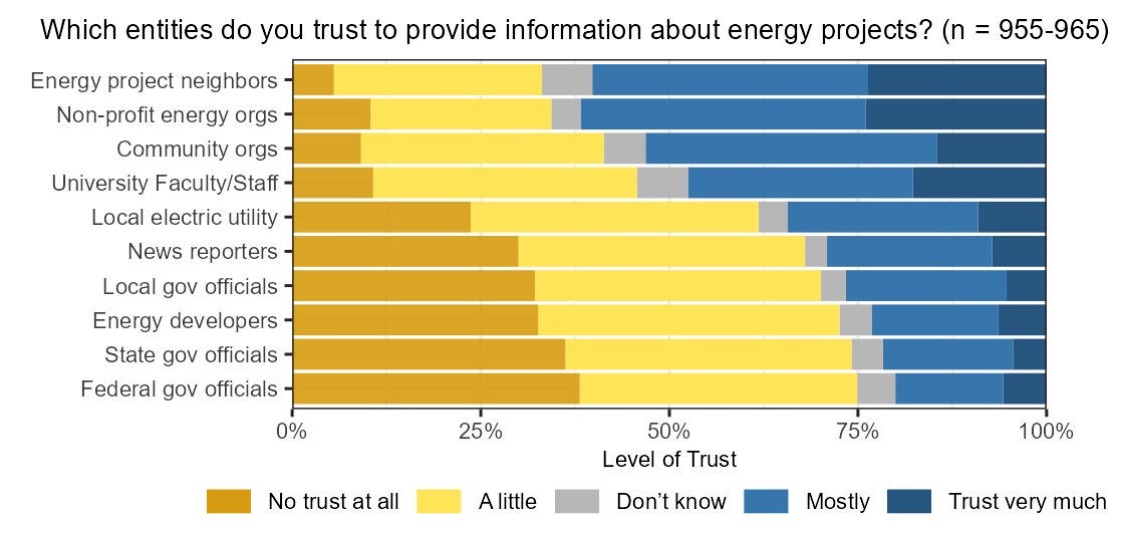
While these initial results significantly advance our understanding of the perceptions of local residents coexisting with LSS, additional analyses of these survey data are planned. These include a more statistically robust analysis of the factors influencing attitudes and a deeper examination of procedural justice through the lens of LSS neighbors.
We thank the U.S. Department of Energy’s Solar Energy Technologies Office for their support of this work, as well as the many LSS neighbors who took the time to respond to the survey, without whom this work would not have been possible.
Berkeley Lab | emp.lbl.gov

Leading renewable energy consultancy and service provider, Natural Power, has appointed Clare Horner as Director of Onshore Consenting and Environment. Clare joins from ERM where she was Onshore Renewables Team Lead and Associate Partner.
 A geography graduate and Chartered Landscape Architect, Clare has developed extensive experience throughout the past 20 years in landscape and visual impact assessment for the onshore renewables sector, and development consent order applications for infrastructure projects
A geography graduate and Chartered Landscape Architect, Clare has developed extensive experience throughout the past 20 years in landscape and visual impact assessment for the onshore renewables sector, and development consent order applications for infrastructure projects
On joining the team, Clare said: “I’m looking forward to working with the onshore team, creating an environment for them to thrive and fulfill their potential, and building on their passion for renewable energy, cultivating this talented team which is equipped with the skills and expertise to drive success for our clients.
“Together, we can strengthen existing partnerships and client relationships, and identify new growth opportunities within the onshore renewables sector.”
In her new role, Clare will be responsible for onshore planning projects, across all renewable energy technologies, throughout the UK and Ireland including the onshore elements of offshore projects such as grid connections and substations.
Rob Brown, Managing Director at Natural Power, added: “Clare is a very welcome addition to the team to lead our well-established and growing Onshore Consenting and Environment department. This role ensures our continued focus and the expansion of capacity and specialist skills in onshore planning.
“Not only is this appointment crucial to the continued development of our onshore services, but it will be pivotal to the continued growth of our well-established global team, working hand in hand with both offshore and environmental departments in delivering successful long-term, future-proofed projects for clients and communities alike.”
When it comes to onshore wind, Natural Power is an expert. It has a strong portfolio of work that demonstrates the ability to support clients through all stages of a project lifecycle, from planning, building and managing a wind farm, the team will provide with right advice at the right time to make sure your wind farm is safe, compliant and productive. Find out more here www.naturalpower.com/uk/expertise/sector/onshore-wind
Natural Power | www.naturalpower.com

The Global Wind Energy Council (GWEC), the representative voice for the global wind industry, notes the announcement from the European Commission on 9 April that it will launch an enquiry into Chinese turbine suppliers under the new Foreign Subsidies Regulation.
It is not a matter for GWEC to comment on any ongoing enquiry under the Foreign Subsidies Regulation. However, GWEC and its members put forth the following recommendations regarding the use of trade and other economic instruments, and their impact on the ability of the global wind industry to grow and meet international climate and energy targets:
1. GWEC believes that fair and transparent trade is essential to achieving the goals of the global energy transition and delivering its economic benefits.
2. GWEC believes that competition is essential and is best managed through bilateral and multilateral activities.
3. GWEC considers that trade restrictions could disproportionately affect developing economies, particularly low-income countries, and undermine the aim of a just and orderly transition.
4. GWEC recommends the use of incentives and supportive policy frameworks to accelerate deployment of renewables projects and economic benefits.
GWEC | https://gwec.net/
[1] According to the 1.5C-aligned goal set at COP28 to triple global renewable energy capacity by 2030, based on authoritative scenarios from the International Energy Agency (IEA) and International Renewable Energy Agency (IRENA), this would require annual wind energy installations to roughly triple from current deployment levels of 117 GW in 2023 to at least 320 GW by 2030.

The Four Corners Clean Energy Alliance (4CCEA) is excited to announce the addition of a diverse array of stakeholders across the spectrum of the clean energy industry, amplifying its efforts to promote sustainable clean energy development in the Four Corners area, with a strong emphasis on supporting the Navajo Nation. Joining the alliance are Four Corners Innovation, Arizona Center for a Carbon Neutral Economy (AzCaNE), Four Corners Economic Development, Tallgrass Energy, Navajo Transitional Energy Company (NTEC), Nature and People First, Process Service and Equipment Company (PESCO), New Mexico State University, and New Mexico Tech.
“The inclusion of these diverse and dynamic organizations marks a significant leap towards developing a clean energy hub in the region,” said 4CCEA Executive Director, Matthew Gonzales. “Their commitment strengthens our push for clean energy solutions like hydrogen, solar, and wind power, and cutting-edge technologies in battery storage and carbon capture.”
“The addition of our latest member companies is critical to advancing transparent, evidence-based dialogue and public engagement, especially on the Navajo Nation,” added 4CCEA Chairman, Steve Grey. "This is a crucial time for the Four Corners region and the Navajo Nation, as we join forces to lead the way in responsible and sustainable energy development in the U.S.”
Four Corners Clean Energy Alliance | https://fourcornerscleanenergyalliance.org

RE+ Events is proud to announce Germany as the official Spotlight Country for RE+ 24 in Anaheim, CA. Bolstering the U.S.-Germany Climate and Energy Partnership focused on supporting sustainable technologies accelerating the clean energy transition, the Spotlight Country designation provides German clean energy companies and partners the opportunity to showcase their products and services to 40,000 global attendees.
German companies and associations within the hydrogen, solar, storage, wind energy, and zero-emission vehicles industries will be on full display as part of the Spotlight Country Pavilion in the Expo Hall. Companies who participate within the Spotlight Country Pavilion receive key benefits, including a specialty designated location on the RE+ 24 show floor, thought leadership opportunities at the Global Markets Summit and Innovation Stage, networking opportunities at an exclusive reception and marketing promotion to the RE+ Events network.
The Spotlight Country is supported by prominent German organizations: EUPD Research, Fraunhofer, The Representative of German Business for the Western United States (GACC West), International Solar Energy Research Center (ISC Konstanz), and VDMA.
RE+ 24 will take place September 9-12, in Anaheim, CA. German companies who are interested in exhibiting or sponsoring should contact [email protected] or visit re-plus.com/spotlight-country for more information.
RE+ Events | https://re-plus.events/
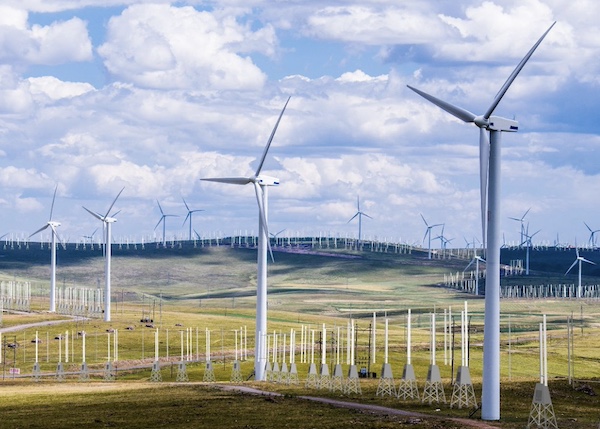
Wind Harvest International, a California-based company that is building a novel type of short, utility-scale turbine, announced they have raised $379,000, as of this morning, during the first two weeks of their Crowdfunding campaign on the SEC-approved platform Netcapital.com.
In 2020-2023, the company raised over $2.5 million in RegCF offerings. This capital was used to make, install, and test the prototype Wind Harvester™ 3.1, a vertical axis wind turbine (VAWT). The turbine completed Technology Readiness Level 7 (of 9) at the UL Advanced Wind Turbine Testing Facility in 2022-23.
“Completing TRL 7 led Wind Harvest’s engineering team to finish designing the final commercial turbine which is now fully ready to complete TRL 8 - third-party certification,” stated the Company’s principal engineer Dr. Ola Ajala. “In the process, we came up with seven new patents being processed, one of which - the arm blade hinge - has recently been granted.”
Wind Harvest’s turbines capture turbulent mid-level wind (60-120’ above the ground) that traditional horizontal axis wind turbines (HAWT) do not use. Using UL Windnavigator wind speed data, Wind Harvest produced maps and a report that shows the potential to add 15,000 MWs worth (or 200,000 total) of short VAWTs the size of Wind Harvesters in and around existing turbines in California’s wind resource areas.
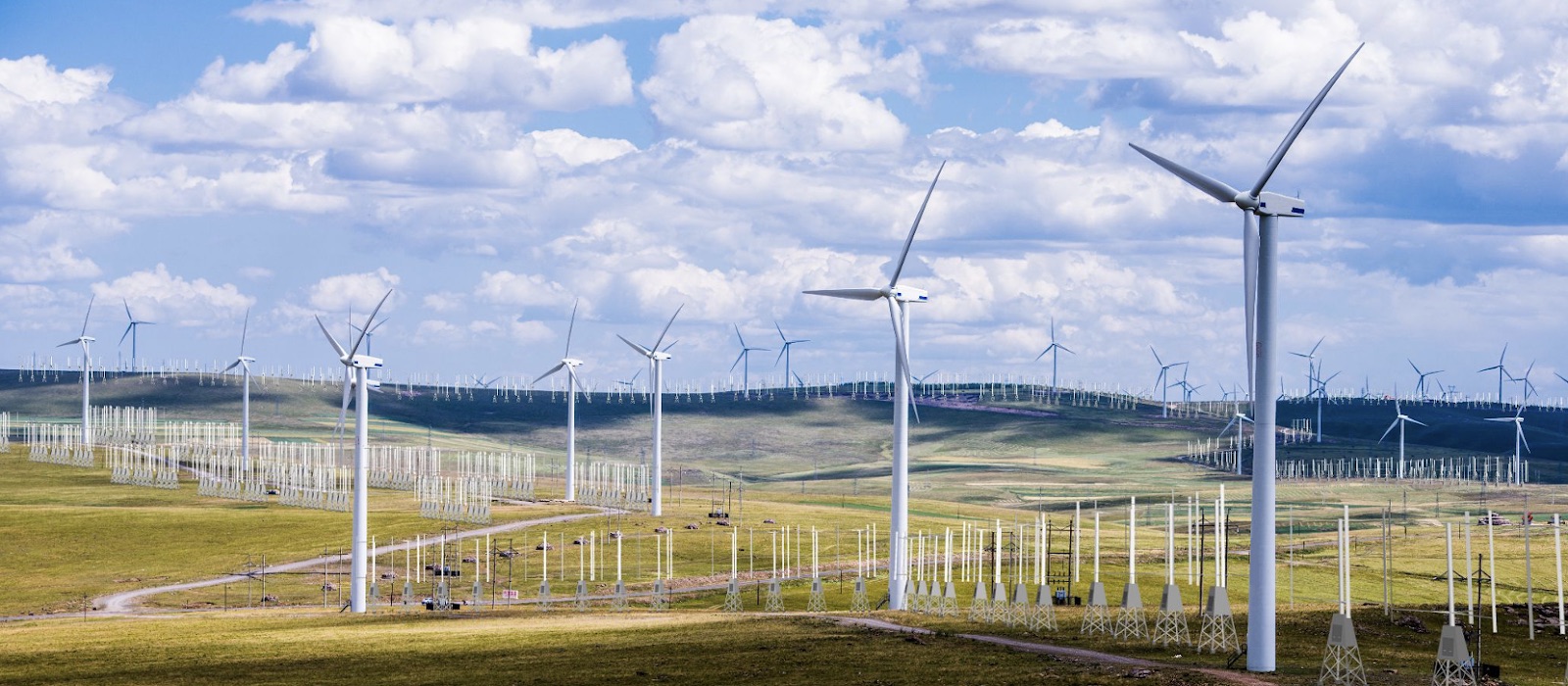
Above is an example of Wind Harvester Vertical-Axis Wind Turbines sitting below traditional Horizontal-Axis Wind Turbines
“The cost to make, install, and test a pair of Wind Harvester 4.0s near the existing model 3.1 is under $1,000,000,” said Kevin Wolf, CEO and co-founder of Wind Harvest. “It is great to be so close to fully commercializing our turbines knowing that the general public can invest in our efforts through the Netcapital offering.”
“Our turbines are fully ready for certification. Our computer models have been validated. We have already started ordering the long lead time parts,” stated Ajala. “Methodically going through the Technology Readiness Level process has been a key to our success.”
Wind Harvest International | www.windharvest.com
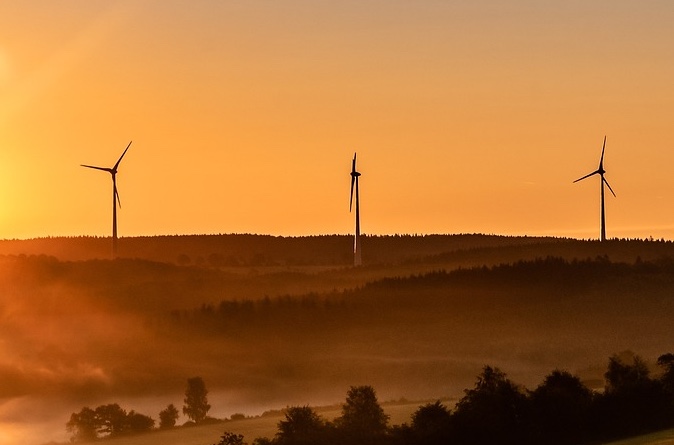
Copenhagen Infrastructure Partners (CIP), acting on behalf of its flagship fund, CI V, announced the successful acquisition of Liberty Renewables, a 1.3 GW portfolio of onshore wind projects in New York. Established in 2019, Liberty Renewables (“Liberty”) owns a portfolio of greenfield renewable energy projects in New York. With a robust pipeline of approximately 1.3 GW of onshore wind, Liberty is well positioned to contribute significantly to New York’s clean energy objectives and to support the state’s journey towards economy-wide decarbonization.
“Onshore wind will play an important role in decarbonizing New York’s power grid and will be critical to achieving its nation-leading renewable targets,” said Tim Evans, partner and Head of North America at CIP. “We are excited to support New York’s clean energy transition through the acquisition of the Liberty portfolio.”
“We are delighted to announce this transaction with CIP,” said Andy MacCallum, President, Liberty Renewables. “CIP has a strong track record of developing and financing renewable energy projects across multiple markets in the U.S., and we are excited to leverage this expertise for the successful delivery of this portfolio in New York.”
Liberty’s inaugural project, Hoffman Falls Wind, recently submitted its 94-C application to New York’s Office of Renewable Energy Siting and is scheduled to commence construction in 2026. The remaining projects in the portfolio are expected to start construction between 2027 and 2030.
With a target size of EUR 12bn, CIP’s fifth flagship fund, CI V, is set to become the largest of its kind globally. CI V is off to a strong start with a large and diversified portfolio of renewable energy infrastructure projects in the development stage and potential equity commitments of EUR 22 billion. The fund has already made two investments with additional four investments expected during 2024 ensuring fast deployment of capital.
Copenhagen Infrastructure Partners | www.cip.com
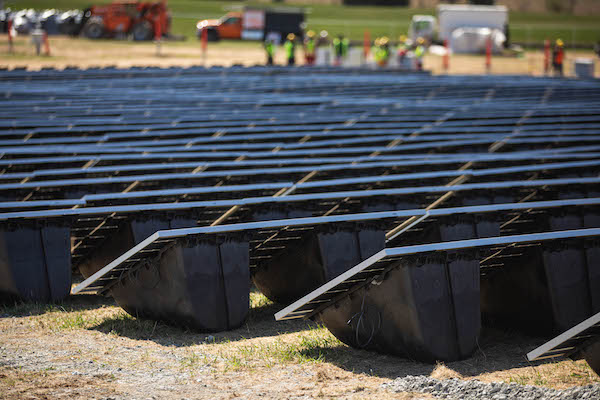
Alternative Energies May 15, 2023
The United States is slow to anger, but relentlessly seeks victory once it enters a struggle, throwing all its resources into the conflict. “When we go to war, we should have a purpose that our people understand and support,” as former Secretary ....
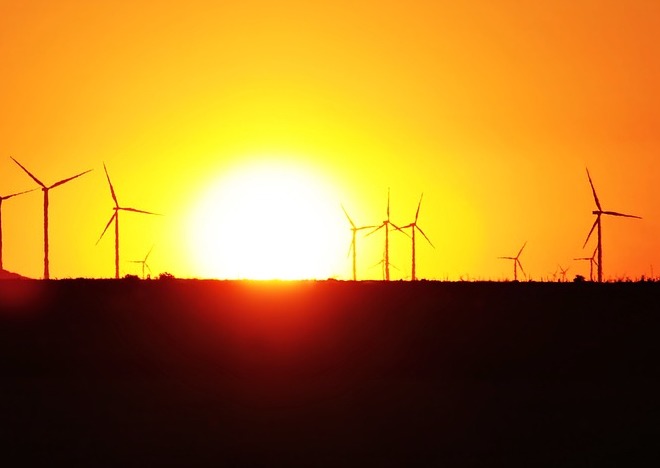
Unleashing trillions of dollars for a resilient energy future is within our grasp — if we can successfully navigate investment risk and project uncertainties.
The money is there — so where are the projects?
A cleaner and more secure energy future will depend on tapping trillions of dollars of capital. The need to mobilize money and markets to enable the energy transition was one of the key findings of one of the largest studies ever conducted among the global energy sector C-suite. This will mean finding ways to reduce the barriers and uncertainties that prevent money from flowing into the projects and technologies that will transform the energy system. It will also mean fostering greater collaboration and alignment among key players in the energy space.
 Interestingly, the study found that insufficient access to finance was not considered the primary cause of the current global energy crisis. In fact, capital was seen to be available — but not being unlocked. Why is that? The answer lies in the differing risk profiles of energy transition investments around the world. These risks manifest in multiple ways, including uncertainties relating to project planning, public education, stakeholder engagement, permitting, approvals, policy at national and local levels, funding and incentives, technology availability, and supply chains.
Interestingly, the study found that insufficient access to finance was not considered the primary cause of the current global energy crisis. In fact, capital was seen to be available — but not being unlocked. Why is that? The answer lies in the differing risk profiles of energy transition investments around the world. These risks manifest in multiple ways, including uncertainties relating to project planning, public education, stakeholder engagement, permitting, approvals, policy at national and local levels, funding and incentives, technology availability, and supply chains.
These risks need to be addressed to create more appealing investment opportunities for both public and private sector funders. This will require smart policy and regulatory frameworks that drive returns from long-term investment into energy infrastructure. It will also require investors to recognize that resilient energy infrastructure is more than an ESG play — it is a smart investment in the context of doing business in the 21st century.
Make de-risking investment profiles a number one priority
According to the study, 80 percent of respondents believe the lack of capital being deployed to accelerate the transition is the primary barrier to building the infrastructure required to improve energy security. At the same time, investors are looking for opportunities to invest in infrastructure that meets ESG and sustainability criteria. This suggests an imbalance between the supply and demand of capital for energy transition projects.
How can we close the gap?
One way is to link investors directly to energy companies. Not only would this enable true collaboration and non-traditional partnerships, but it would change the way project financing is conceived and structured — ultimately aiding in potentially satisfying the risk appetite of latent but hugely influential investors, such as pension funds. The current mismatch of investor appetite and investable projects reveals a need for improving risk profiles, as well as a mindset shift towards how we bring investment and developer stakeholders together for mutual benefit. The circular dilemma remains: one sector is looking for capital to undertake projects within their skill to deploy, while another sector wonders where the investable projects are.
This conflict is being played out around the world; promising project announcements are made, only to be followed by slow progress (or no action at all). This inertia results when risks are compounded and poorly understood. To encourage collaboration between project developers and investors with an ESG focus, more attractive investment opportunities can be created by pulling several levers: public and private investment strategies, green bonds and other sustainable finance instruments, and innovative financing models such as impact investing.
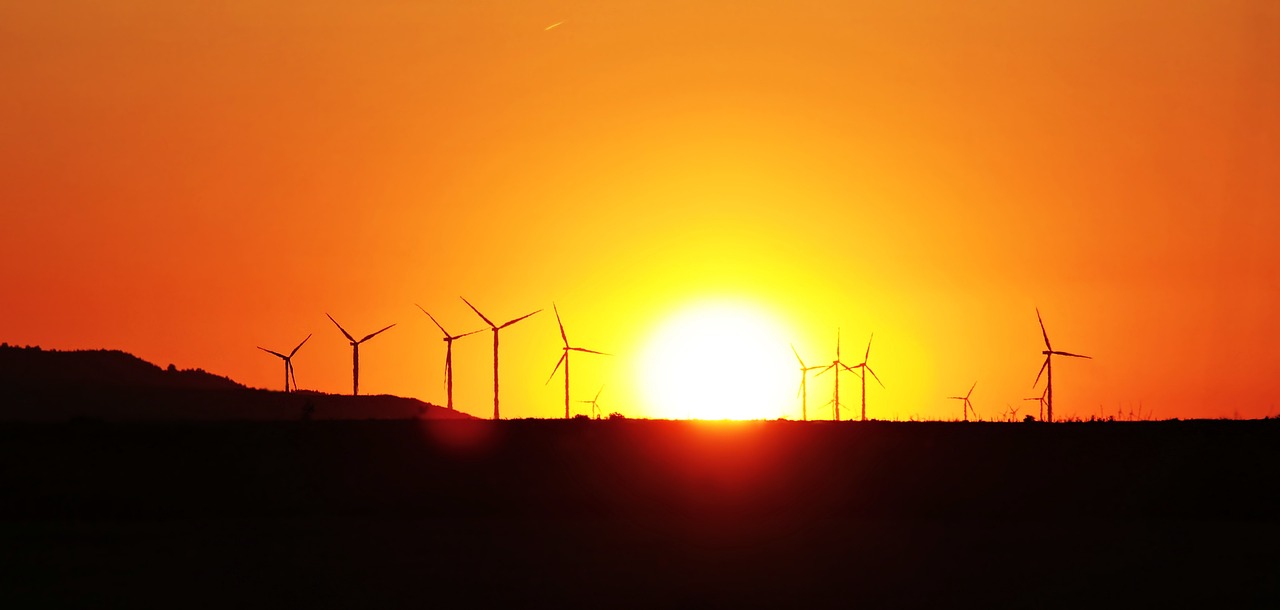
Expedite permitting to speed the adoption of new technologies
Another effective strategy to de-risk investment profiles is found in leveraging new technologies and approaches that reduce costs, increase efficiency, and enhance the reliability of energy supply. Research shows that 62 percent of respondents indicated a moderate or significant increase in investment in new and transitional technologies respectively, highlighting the growing interest in innovative solutions to drive the energy transition forward.
Hydrogen, carbon capture and storage, large-scale energy storage, and smart grids are some of the emerging technologies identified by survey respondents as having the greatest potential to transform the energy system and create new investment opportunities. However, these technologies face challenges such as long lag times between conception and implementation.
If the regulatory environment makes sense, then policy uncertainty is reduced, and the all-important permitting pathways are well understood and can be navigated. Currently, the lack of clear, timely, and fit-for-purpose permitting is a major roadblock to the energy transition. To truly unleash the potential of transitional technologies requires the acceleration of regulatory systems that better respond to the nuance and complexity of such technologies (rather than the current one-size-fits all approach). In addition, permitting processes must also be expedited to dramatically decrease the period between innovation, commercialization, and implementation. One of the key elements of faster permitting is effective consultation with stakeholders and engagement with communities where these projects will be housed for decades. This is a highly complex area that requires both technical and communication skills.
The power of collaboration, consistency, and systems thinking
The report also reveals the need for greater collaboration among companies in the energy space to build a more resilient system. The report shows that, in achieving net zero, there is a near-equal split between those increasing investment (47 percent of respondents), and those decreasing investment (39 percent of respondents). This illustrates the complexity and diversity of the system around the world. A more resilient system will require all its components – goals and actions – to be aligned towards a common outcome.
Another way to de-risk the energy transition is to establish consistent, transparent, and supportive policy frameworks that encourage investment and drive technological innovation. The energy transition depends on policy to guide its direction and speed by affecting how investors feel and how the markets behave. However, inconsistent or inadequate policy can also be a source of uncertainty and instability. For example, shifting political priorities, conflicting international standards, and the lack of market-based mechanisms can hinder the deployment of sustainable technologies, resulting in a reluctance to commit resources to long-term projects.
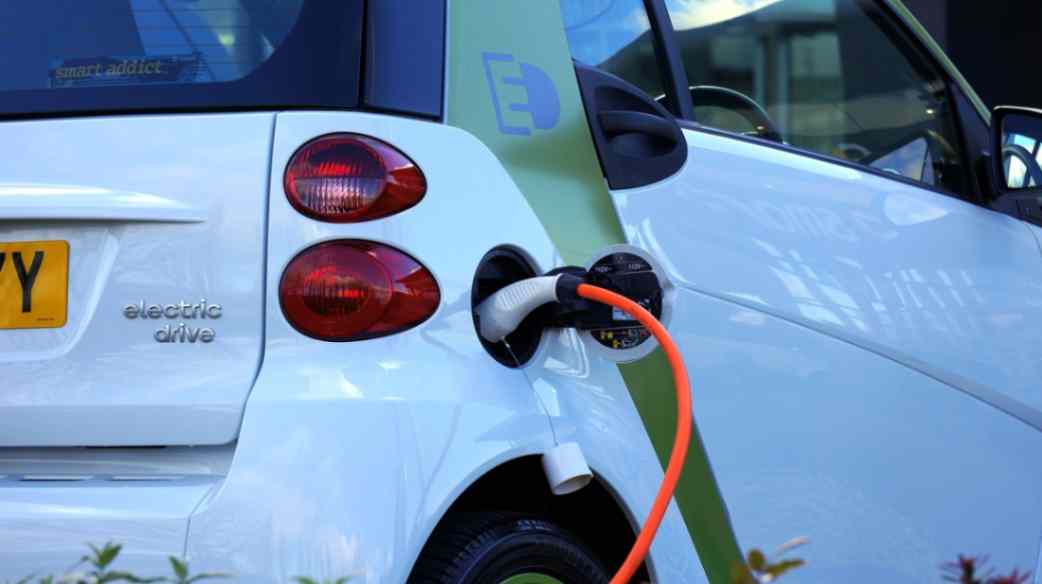
Variations in country-to-country deployment creates disparities in energy transition progress. For instance, the 2022 Inflation Reduction Act in the US has posed challenges for the rest of the world, by potentially channeling energy transition investment away from other markets and into the US. This highlights the need for a globally unified approach to energy policy that balances various national interests while addressing a global problem.
To facilitate the energy transition, it is imperative to establish stable, cohesive, and forward-looking policies that align with global goals and standards. By harmonizing international standards, and providing clear and consistent signals, governments and policymakers can generate investor confidence, helping to foster a robust energy ecosystem that propels the sector forward.
Furthermore, substantive and far-reaching discussions at international events like the United Nations Conference of the Parties (COP), are essential to facilitate this global alignment. These events provide an opportunity to de-risk the energy transition through consistent policy that enables countries to work together, ensuring that the global community can tackle the challenges and opportunities of the energy transition as a united front.
Keeping net-zero ambitions on track
Despite the challenges faced by the energy sector, the latest research reveals a key positive: 91 percent of energy leaders surveyed are working towards achieving net zero. This demonstrates a strong commitment to the transition and clear recognition of its importance. It also emphasizes the need to accelerate our efforts, streamline processes, and reduce barriers to realizing net-zero ambitions — and further underscores the need to de-risk energy transition investment by removing uncertainties.
The solution is collaborating and harmonizing our goals with the main players in the energy sector across the private and public sectors, while establishing consistent, transparent, and supportive policy frameworks that encourage investment and drive technological innovation.
These tasks, while daunting, are achievable. They require vision, leadership, and action from all stakeholders involved. By adopting a new mindset about how we participate in the energy system and what our obligations are, we can stimulate the rapid progress needed on the road to net zero.
Dr. Tej Gidda (Ph.D., M.Sc., BSc Eng) is an educator and engineer with over 20 years of experience in the energy and environmental fields. As GHD Global Leader – Future Energy, Tej is passionate about moving society along the path towards a future of secure, reliable, and affordable low-carbon energy. His focus is on helping public and private sector clients set and deliver on decarbonization goals in order to achieve long-lasting positive change for customers, communities, and the climate. Tej enjoys fostering the next generation of clean energy champions as an Adjunct Professor at the University of Waterloo Department of Civil and Environmental Engineering.
GHD | www.ghd.com
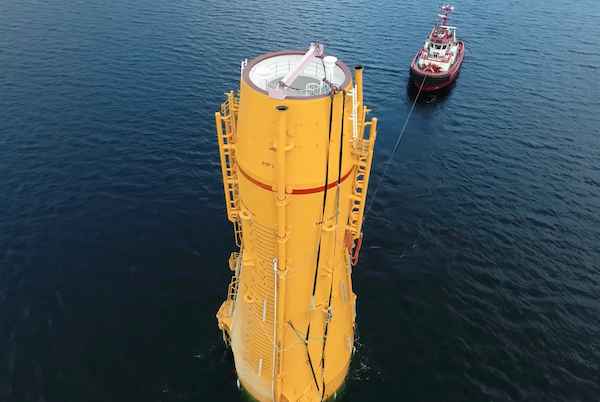
The Kincardine floating wind farm, located off the east coast of Scotland, was a landmark development: the first commercial-scale project of its kind in the UK sector. Therefore, it has been closely watched by the industry throughout its installation. With two of the turbines now having gone through heavy maintenance, it has also provided valuable lessons into the O&M processes of floating wind projects.
In late May, the second floating wind turbine from the five-turbine development arrived in the port of Massvlakte, Rotterdam, for maintenance. An Anchor Handling Tug Supply (AHTS)
vessel was used to deliver the KIN-02 turbine two weeks after a Platform Supply Vessel (PSV) and AHTS had worked to disconnect the turbine from the wind farm site. The towing vessel became the third vessel used in the operation.
This is not the first turbine disconnected from the site and towed for maintenance. In the summer of 2022, KIN-03 became the world’s first-ever floating wind turbine that required heavy maintenance (i.e. being disconnected and towed for repair). It was also towed from Scotland to Massvlakte.
Each of these operations has provided valuable lessons for the ever-watchful industry in how to navigate the complexities of heavy maintenance in floating wind as the market segment grows.

The heavy maintenance process
When one of Kincardine’s five floating 9.5 MW turbines (KIN-03) suffered a technical failure in May 2022, a major technical component needed to be replaced. The heavy maintenance strategy selected by the developer and the offshore contractors consisted in disconnecting and towing the turbine and its floater to Rotterdam for maintenance, followed by a return tow and re-connection. All of the infrastructure, such as crane and tower access, remained at the quay following the construction phase. (Note, the following analysis only covers KIN-03, as details of the second turbine operation are not yet available).
Comparing the net vessel days for both the maintenance and the installation campaigns at this project highlights how using a dedicated marine spread can positively impact operations.
For this first-ever operation, a total of 17.2 net vessel days were required during turbine reconnection—only a slight increase on the 14.6 net vessel days that were required for the first hook-up operation performed during the initial installation in 2021. However, it exceeds the average of eight net vessel days during installation. The marine spread used in the heavy maintenance operation differed from that used during installation. Due to this, it did not benefit from the learning curve and experience gained throughout the initial installation, which ultimately led to the lower average vessel days.
The array cable re-connection operation encountered a similar effect. The process was performed by one AHTS that spent 10 net vessel days on the operation. This compares to the installation campaign, where the array cable second-end pull-in lasted a maximum of 23.7 hours using a cable layer.
Overall, the turbine shutdown duration can be broken up as 14 days at the quay for maintenance, 52 days from turbine disconnection to turbine reconnection, and 94 days from disconnection to the end of post-reconnection activities.
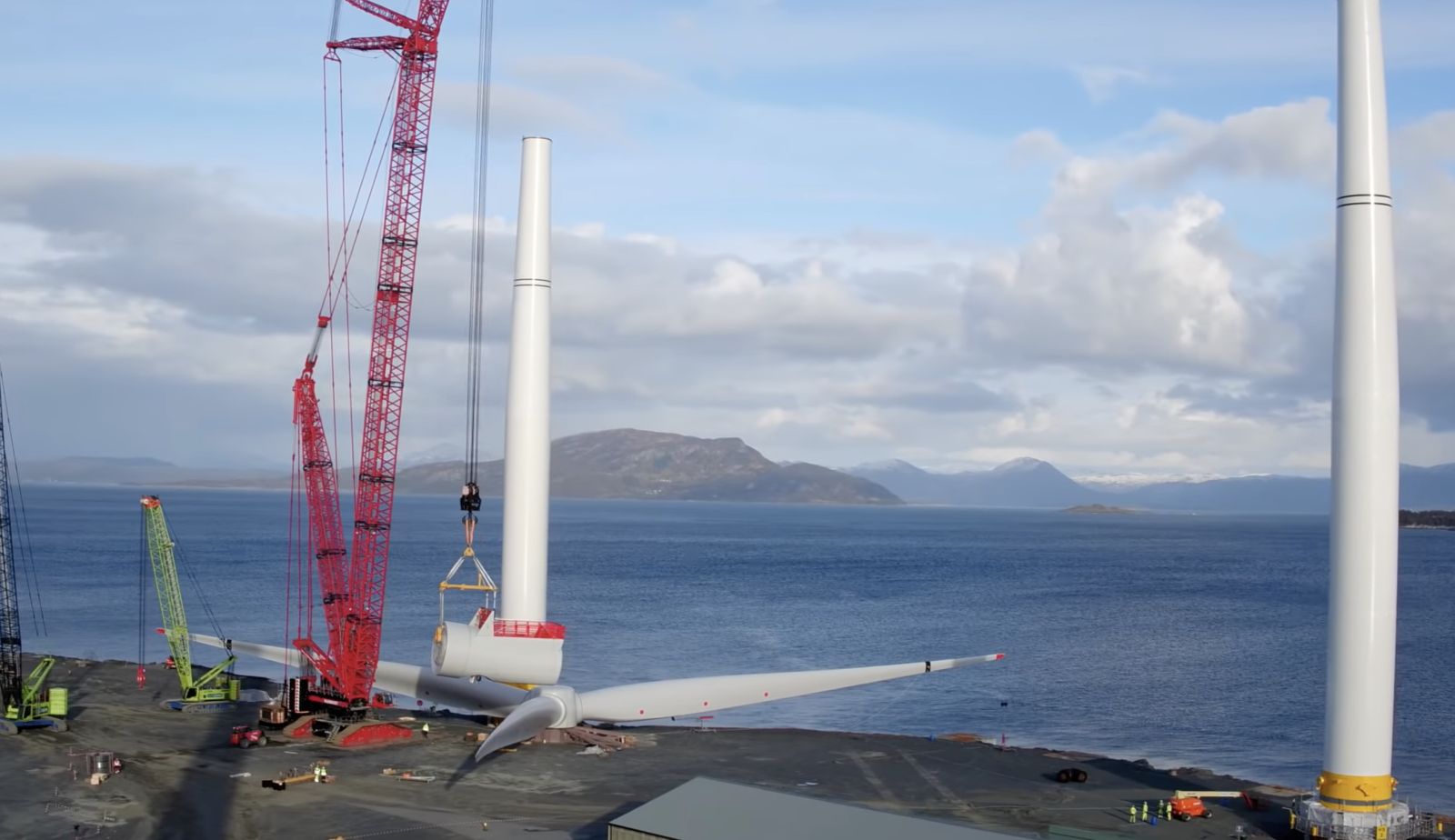
What developers should keep in mind for heavy maintenance operations
This analysis has uncovered two main lessons developers should consider when planning a floating wind project: the need to identify an appropriate O&M port, and to guarantee that a secure fleet is available.
Floating wind O&M operations require a port with both sufficient room and a deep-water quay. The port must also be equipped with a heavy crane with sufficient tip height to accommodate large floaters and reach turbine elevation. Distance to the wind farm should also be taken into account, as shorter distances will reduce towing time and, therefore, minimize transit and non-productive turbine time.
During the heavy maintenance period for KIN-03 and KIN-02, the selected quay (which had also been utilized in the initial installation phase of the wind farm project), was already busy as a marshalling area for other North Sea projects. This complicated the schedule significantly, as the availability of the quay and its facilities had to be navigated alongside these other projects. This highlights the importance of abundant quay availability both for installation (long-term planning) and maintenance that may be needed on short notice.
At the time of the first turbine’s maintenance program (June 2022), the North Sea AHTS market was in an exceptional situation: the largest bollard pull AHTS units contracted at over $200,000 a day, the highest rate in over a decade.
During this time, the spot market was close to selling out due to medium-term commitments, alongside the demand for high bollard pull vessels for the installation phase at a Norwegian floating wind farm project. The Norwegian project required the use of four AHTS above a 200t bollard pull. With spot rates ranging from $63,000 to $210,000 for the vessels contracted for Kincardine’s maintenance, the total cost of the marine spread used in the first repair campaign was more than $4 million.
Developers should therefore consider the need to structure maintenance contracts with AHTS companies, either through frame agreements or long-term charters, to decrease their exposure to spot market day rates as the market tightens in the future.

While these lessons are relevant for floating wind developers now, new players are looking towards alternative heavy O&M maintenance options for the future. Two crane concepts are especially relevant in this instance. The first method is for a crane to be included in the turbine nacelle to be able to directly lift the component which requires repair from the floater, as is currently seen on onshore turbines. This method is already employed in onshore turbines and could be applicable for offshore. The second method is self-elevating cranes with several such solutions already in development.
The heavy maintenance operations conducted on floating turbines at the Kincardine wind farm have provided invaluable insights for industry players, especially developers. The complex process of disconnecting and towing turbines for repairs highlights the need for meticulous planning and exploration of alternative maintenance strategies, some of which are already in the pipeline. As the industry evolves, careful consideration of ports, and securing fleet contracts, will be crucial in driving efficient and cost-effective O&M practices for the floating wind market.
Sarah McLean is Market Research Analyst at Spinergie, a maritime technology company specializing in emission, vessel performance, and operation optimization.
Spinergie | www.spinergie.com
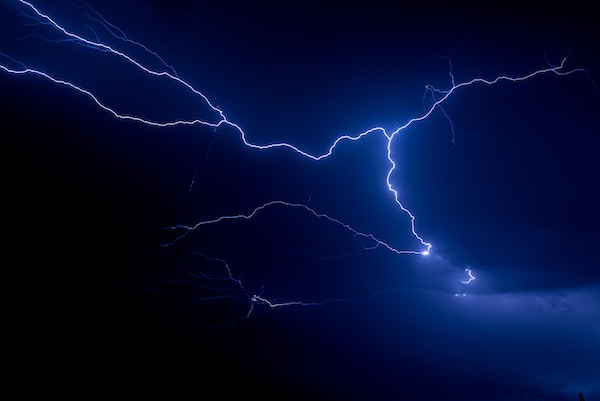
According to the Energy Information Administration (EIA), developers plan to add 54.5 gigawatts (GW) of new utility-scale electric generating capacity to the U.S. power grid in 2023. More than half of this capacity will be solar. Wind power and battery storage are expected to account for roughly 11 percent and 17 percent, respectively.
A large percentage of new installations are being developed in areas that are prone to extreme weather events and natural disasters (e.g., Texas and California), including high wind, tornadoes, hail, flooding, earthquakes, wildfires, etc. With the frequency and severity of many of these events increasing, project developers, asset owners, and tax equity partners are under growing pressure to better understand and mitigate risk.
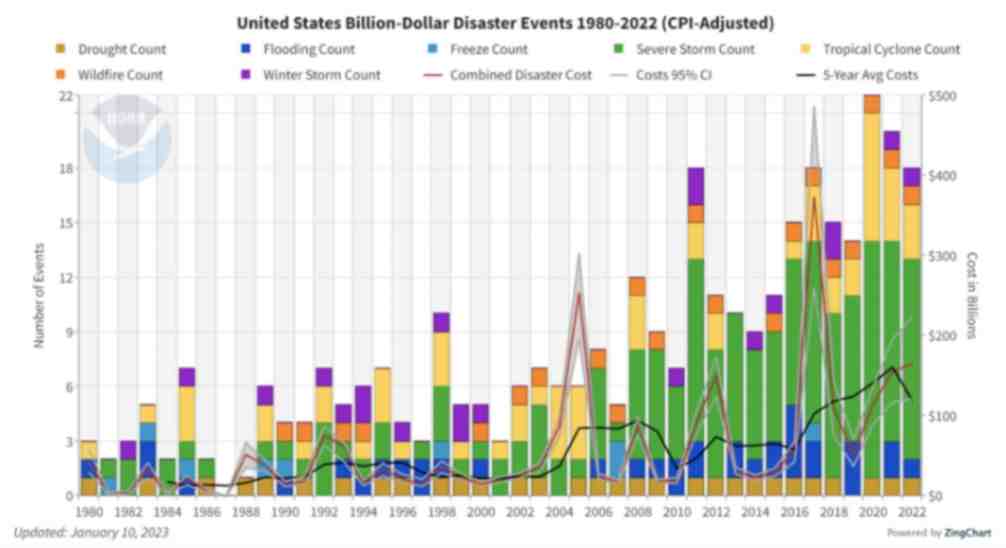
Figure 1. The history of billion-dollar disasters in the United States each year from 1980 to 2022 (source: NOAA)
In terms of loss prevention, a Catastrophe (CAT) Modeling Study is the first step to understanding the exposure and potential financial loss from natural hazards or extreme weather events. CAT studies form the foundation for wider risk management strategies, and have significant implications for insurance costs and coverage.
Despite their importance, developers often view these studies as little more than a formality required for project financing. As a result, they are often conducted late in the development cycle, typically after a site has been selected. However, a strong case can be made for engaging early with an independent third party to perform a more rigorous site-specific technical assessment. Doing so can provide several advantages over traditional assessments conducted by insurance brokerage affiliates, who may not possess the specialty expertise or technical understanding needed to properly apply models or interpret the results they generate. One notable advantage of early-stage catastrophe studies is to help ensure that the range of insurance costs, which can vary from year to year with market forces, are adequately incorporated into the project financial projections.
The evolving threat of natural disasters
Over the past decade, the financial impact of natural hazard events globally has been almost three trillion dollars. In the U.S. alone, the 10-year average annual cost of natural disaster events exceeding $1 billion increased more than fourfold between the 1980s ($18.4 billion) and the 2010s ($84.5 billion).
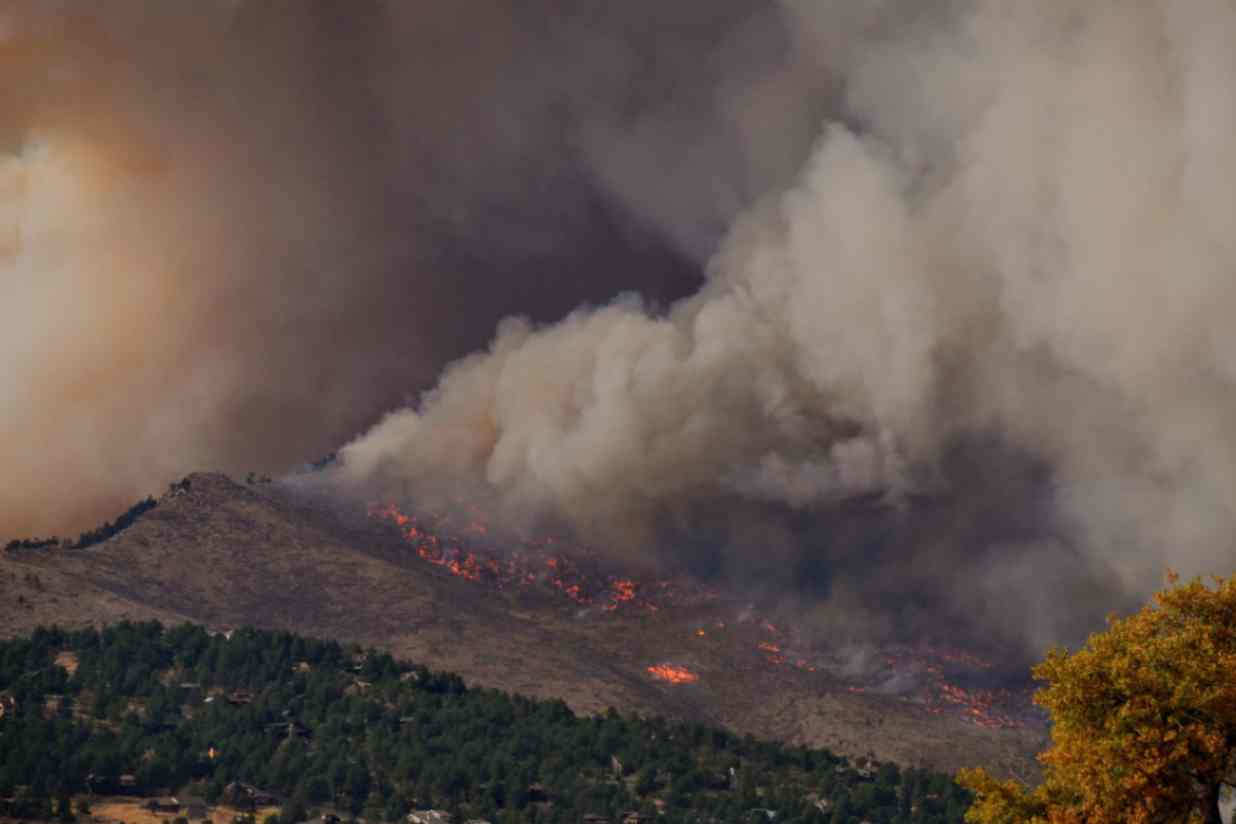
Investors, insurers, and financiers of renewable projects have taken notice of this trend, and are subsequently adapting their behavior and standards accordingly. In the solar market, for example, insurance premiums increased roughly four-fold from 2019 to 2021. The impetus for this increase can largely be traced back to a severe storm in Texas in 2019, which resulted in an $80 million loss on 13,000 solar panels that were damaged by hail.
The event awakened the industry to the hazards severe storms present, particularly when it comes to large-scale solar arrays. Since then, the impact of convective weather on existing and planned installations has been more thoroughly evaluated during the underwriting process. However, far less attention has been given to the potential for other natural disasters; events like floods and earthquakes have not yet resulted in large losses and/or claims on renewable projects (including wind farms). The extraordinary and widespread effect of the recent Canadian wildfires may alter this behavior moving forward.
A thorough assessment, starting with a CAT study, is key to quantifying the probability of their occurrence — and estimating potential losses — so that appropriate measures can be taken to mitigate risk.
All models are not created equal
Industrywide, certain misconceptions persist around the use of CAT models to estimate losses from an extreme weather event or natural disaster.
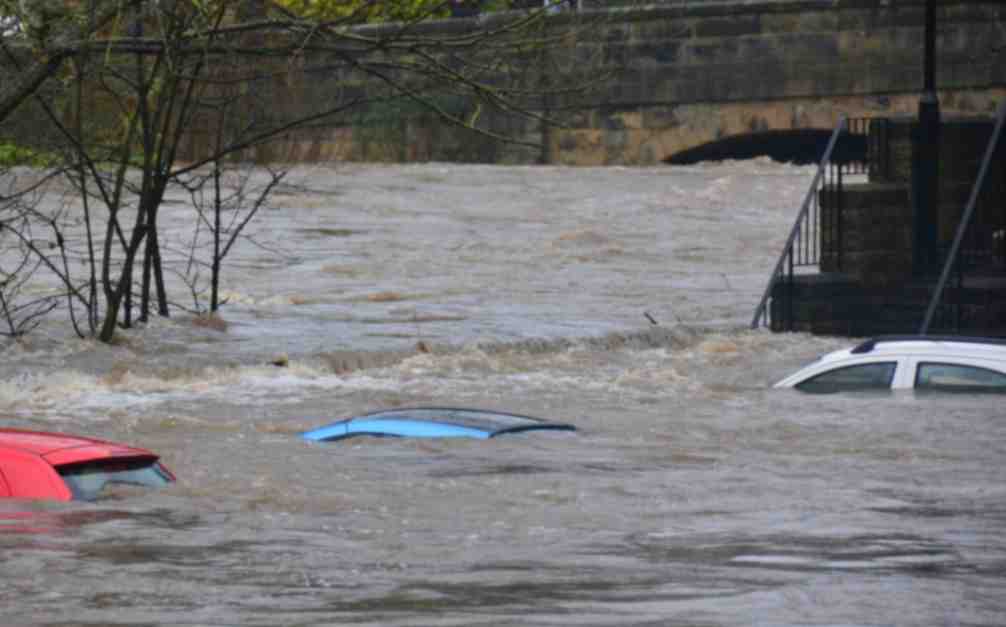
Often, the perception is that risk assessors only need a handful of model inputs to arrive at an accurate figure, with the geographic location being the most important variable. While it’s true that many practitioners running models will pre-specify certain project characteristics regardless of the asset’s design (for example, the use of steel moment frames without trackers for all solar arrays in a given region or state), failure to account for even minor details can lead to loss estimates that are off by multiple orders of magnitude.
The evaluation process has recently become even more complex with the addition of battery energy storage. Relative to standalone solar and wind farms, very little real-world experience and data on the impact of extreme weather events has been accrued on these large-scale storage installations. Such projects require an even greater level of granularity to help ensure that all risks are identified and addressed.
Even when the most advanced modeling software tools are used (which allow for thousands of lines of inputs), there is still a great deal that is subject to interpretation. If the practitioner does not possess the expertise or technical ability needed to understand the model, the margin for error can increase substantially. Ultimately, this can lead to overpaying for insurance. Worse, you may end up with a policy with insufficient coverage. In both cases, the profitability of the asset is impacted.
Supplementing CAT studies
In certain instances, it may be necessary to supplement CAT models with an even more detailed analysis of the individual property, equipment, policies, and procedures. In this way, an unbundled risk assessment can be developed that is tailored to the project. Supplemental information (site-specific wind speed studies and hydrological studies, structural assessment, flood maps, etc.) can be considered to adjust vulnerability models.
This provides an added layer of assurance that goes beyond the pre-defined asset descriptions in the software used by traditional studies or assessments. By leveraging expert elicitations, onsite investigations, and rigorous engineering-based methods, it is possible to discretely evaluate asset-specific components as part of the typical financial loss estimate study: this includes Normal Expected Loss (NEL), also known as Scenario Expected Loss (SEL); Probable Maximum Loss (PML), also known as Scenario Upper Loss (SUL); and Probabilistic Loss (PL).
Understanding the specific vulnerabilities and consequences can afford project stakeholders unique insights into quantifying and prioritizing risks, as well as identifying proper mitigation recommendations.
Every project is unique
The increasing frequency and severity of natural disasters and extreme weather events globally is placing an added burden on the renewable industry, especially when it comes to project risk assessment and mitigation. Insurers have signaled that insurance may no longer be the main basis for transferring risk; traditional risk management, as well as site and technology selection, must be considered by developers, purchasers, and financiers.
As one of the first steps in understanding exposure and the potential capital loss from a given event, CAT studies are becoming an increasingly important piece of the risk management puzzle. Developers should treat them as such by engaging early in the project lifecycle with an independent third-party practitioner with the specialty knowledge, tools, and expertise to properly interpret models and quantify risk.
Hazards and potential losses can vary significantly depending on the project design and the specific location. Every asset should be evaluated rigorously and thoroughly to minimize the margin for error, and maximize profitability over its life.
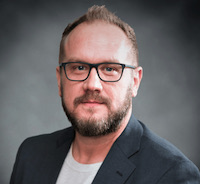 Chris LeBoeuf is Global Head of the Extreme Loads and Structural Risk division of ABS Group, based in San Antonio, Texas. He leads a team of more than 60 engineers and scientists in the US, UK, and Singapore, specializing in management of risks to structures and equipment related to extreme loading events, including wind, flood, seismic and blast. Chris has more than 20 years of professional experience as an engineering consultant, and is a recognized expert in the study of blast effects and blast analysis, as well as design of buildings. He holds a Bachelor of Science in Civil Engineering from The University of Texas at San Antonio, and is a registered Professional Engineer in 12 states.
Chris LeBoeuf is Global Head of the Extreme Loads and Structural Risk division of ABS Group, based in San Antonio, Texas. He leads a team of more than 60 engineers and scientists in the US, UK, and Singapore, specializing in management of risks to structures and equipment related to extreme loading events, including wind, flood, seismic and blast. Chris has more than 20 years of professional experience as an engineering consultant, and is a recognized expert in the study of blast effects and blast analysis, as well as design of buildings. He holds a Bachelor of Science in Civil Engineering from The University of Texas at San Antonio, and is a registered Professional Engineer in 12 states.
ABS Group | www.abs-group.com
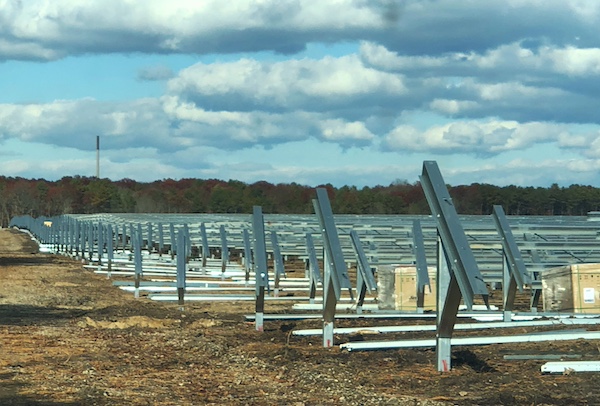
Throughout my life and career as a real estate developer in New York City, I’ve had many successes. In what is clearly one of my most unusual development projects in a long career filled with them, I initiated the building of a solar farm to help t....
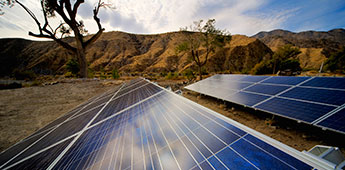
I’m just going to say it, BIPV is dumb. Hear me out…. Solar is the most affordable form of energy that has ever existed on the planet, but only because the industry has been working towards it for the past 15 years. Governments,....
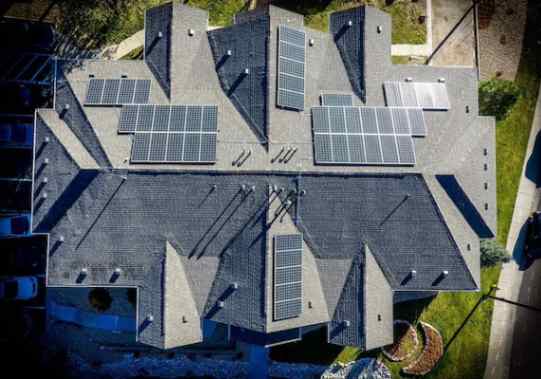
Heat waves encircled much of the earth last year, pushing temperatures to their highest in recorded history. The water around Florida was “hot-tub hot” — topping 101° and bleaching and killing coral in waters around the peninsula. Phoenix had ....
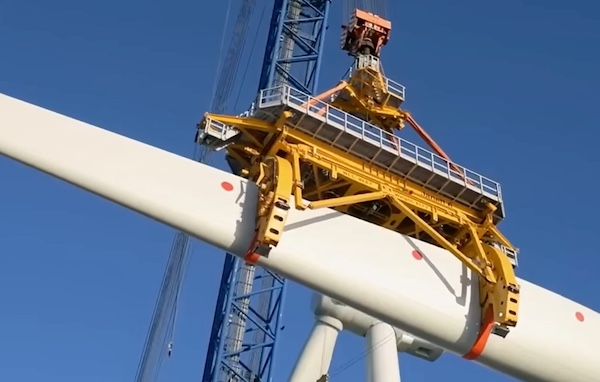
Wind turbines play a pivotal role in the global transition to sustainable energy sources. However, the harsh environmental conditions in which wind turbines operate, such as extreme temperatures, high humidity, and exposure to various contaminants, p....
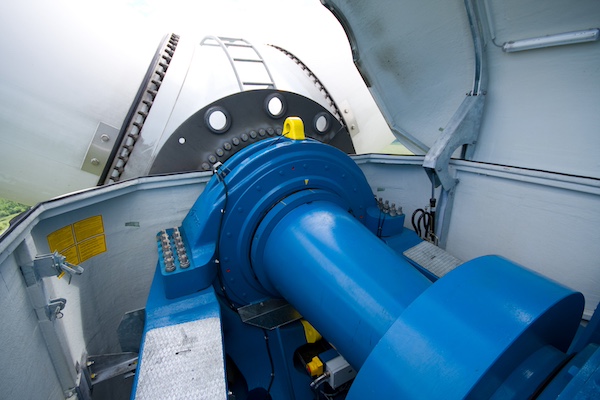
Wind energy remains the leading non-hydro renewable technology, and one of the fastest-growing of all power generation technologies. The key to making wind even more competitive is maximizing energy production and efficiently maintaining the assets. ....
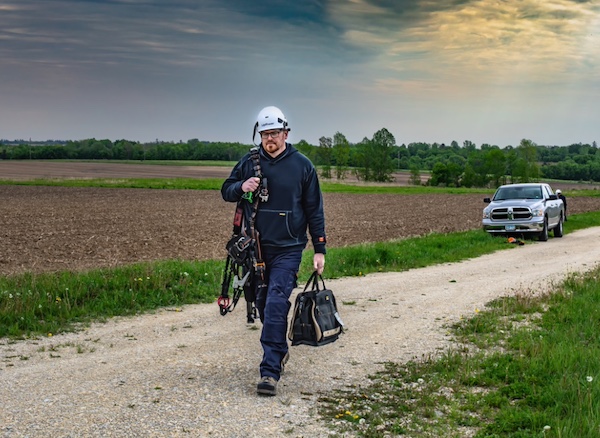
The allure of wind turbines is undeniable. For those fortunate enough to visit these engineering marvels, it’s an experience filled with awe and learning. However, the magnificence of these structures comes with inherent risks, making safety an abs....
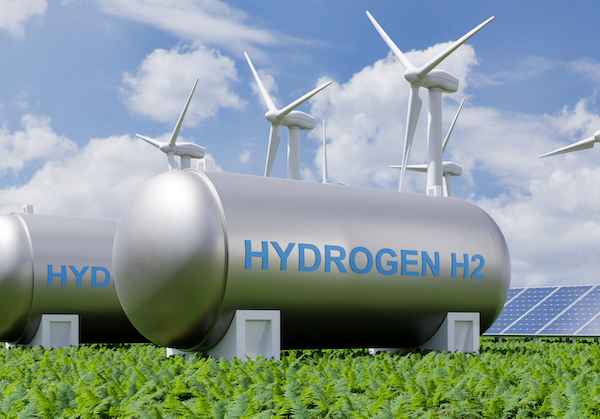
Not enough people know that hydrogen fuel cells are a zero-emission energy technology. Even fewer know water vapor's outsized role in electrochemical processes and reactions. Producing electricity through a clean electrochemical process with water....

In the ever-evolving landscape of sustainable transportation, a ground-breaking shift is here: 2024 ushers in a revolutionary change in Electric Vehicle (EV) tax credits in the United States. Under the Inflation Reduction Act (IRA), a transforma....
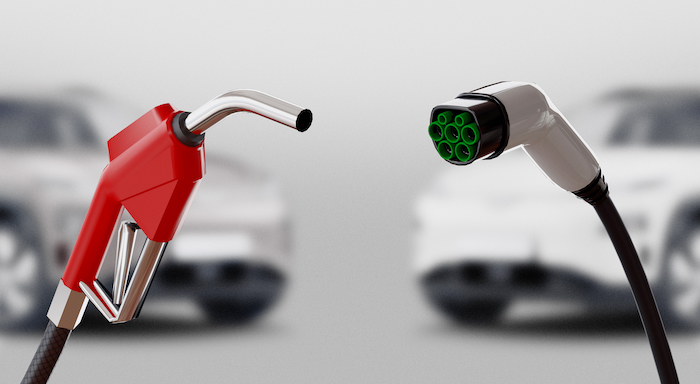
The fact that EV charging is currently cheaper than filling up your traditional gas tank has set a precedent that public EV charging will always remain less expensive. This is certainly a good thing to support the adoption of EVs, but the high infras....

Now more than ever, it would be difficult to overstate the importance of the renewable energy industry. Indeed, it seems that few other industries depend as heavily on constant and rapid innovation. This industry, however, is somewhat unique in its e....

University of Toronto’s latest student residence welcomes the future of living with spaces that are warmed by laptops and shower water. In September 2023, one of North America’s largest residential passive homes, Harmony Commons, located....
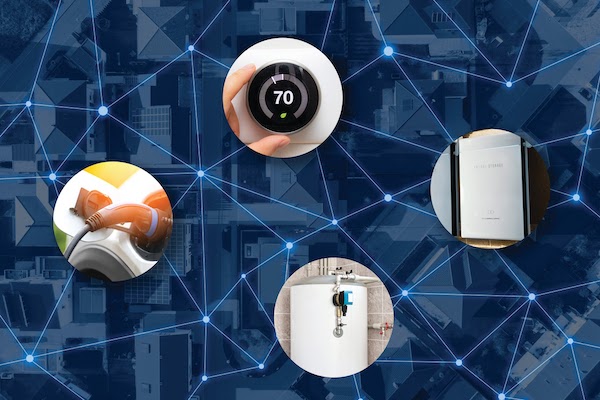
For decades, demand response (DR) has proven a tried-and-true conservation tactic to mitigate energy usage during peak demand hours. Historically, those peak demand hours were relatively predictable, with increases in demand paralleling commuter and ....